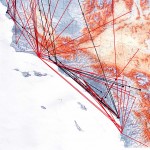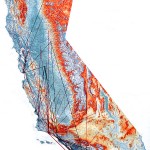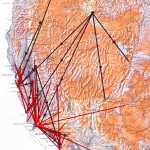TAGGING AND TRACKING MONARCHS
Few volunteers placed small tags on the wings of monarchs in the western states before the 1980s. Well known monarch butterfly expert Fred Urqhart and his wife Nora founded the Insect Migration Association (1952 – 1977). Their studies included mailing thousands of monarchs from east of the Rockies to specific locations west of the Rockies in order to gain a better understanding about autumn migrations in the west. The Urqhart’s provided some interesting data that later corresponded to the natural direction of autumnal monarch movements in the west based on tagging programs.
By the late 1980s, volunteers associated with the Natural History Museum of Los Angeles County and the Monarch Program established annual field trips to western overwintering sites to tag monarchs and learn about their behavior, often called tagging parties or monarch workshops. Interest from the public, media, and scientific community developed rapidly.
A Tagging Workshop at an Overwintering Site on the UCSD Campus, 1997
Ten years later, there were enough butterflies captured, tagged, released, and recovered to reveal general movements throughout the western states and distinct patterns of migration and dispersal from overwintering sites in California — especially southern California where little was previously known.
The maps below show autumn and spring movements west of the Rockies based on tag, release, and recaptures (1980s – 2001). Black lines represent autumn flights and red lines illustrate spring flights from coastal overwintering sites. Numbers of monarchs estimated at overwintering sites since 1997 can be found in the “Thanksgiving Count” archive.
Click each map to enlarge
Tagging monarchs continues into the 21st century in order to learn more about how climate trends and human encroachment affect their migration patterns, overwintering sites, and populations. More attention is now given to regions where limited monitoring or tagging has been conducted in the past.
A group of volunteers in central California started an organization called Monarch Alert. They are tracking spring movements of monarchs from San Luis Obispo County north to Marin County. Recently, most all counties have been included. They use a circular tag on the hind wing with a toll free number. Two other tags are used in the west. Circular tags from the Tucson area in Arizona and Washington State use an e-mail address.
Local groups along the coast of California from communities where monarchs spend the winter are constantly joining together to help protect habitats and learn more about their migration. Tagging monarchs and tracking their migration will give conservation groups more answers when dynamic questions emanate from developers, city councils, or members of the community who have no interest in preserving an area infested with bugs (a belief shared by the native people that occupy the high mountain ranges of central Mexico).




